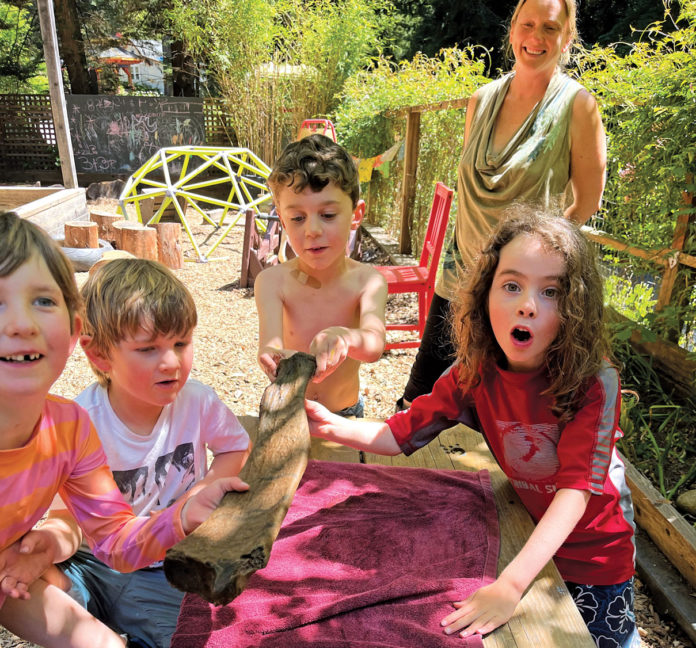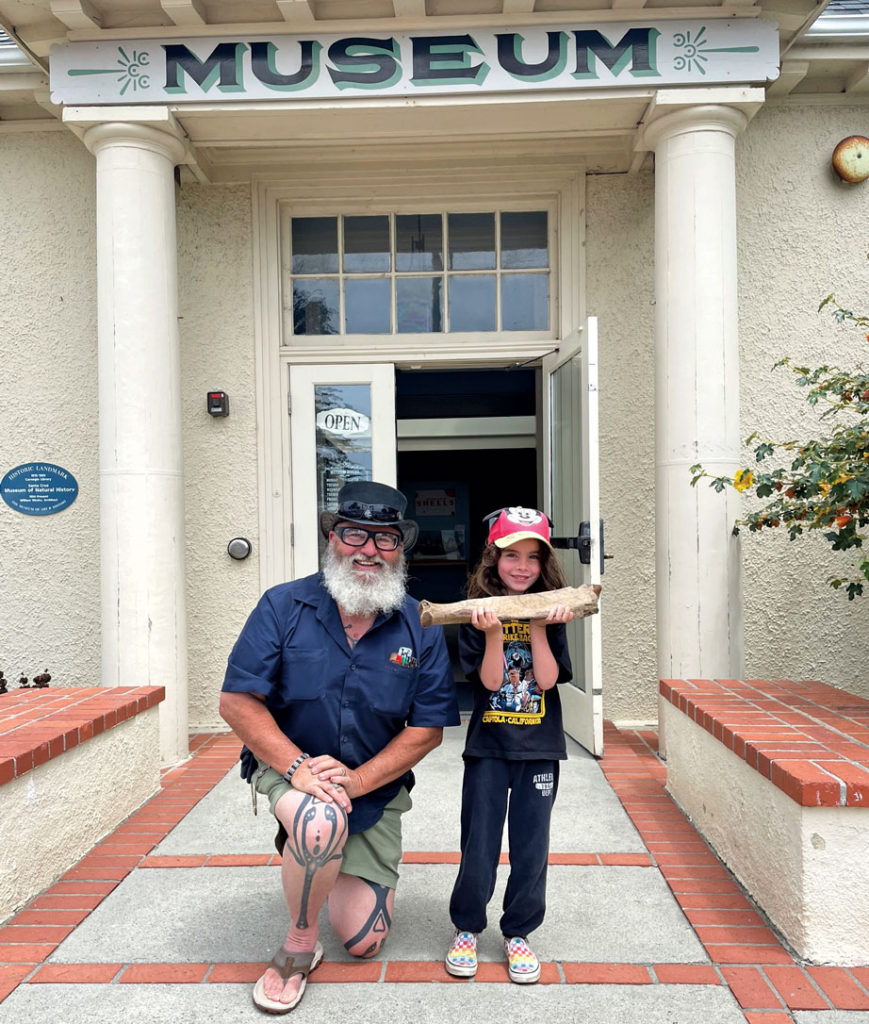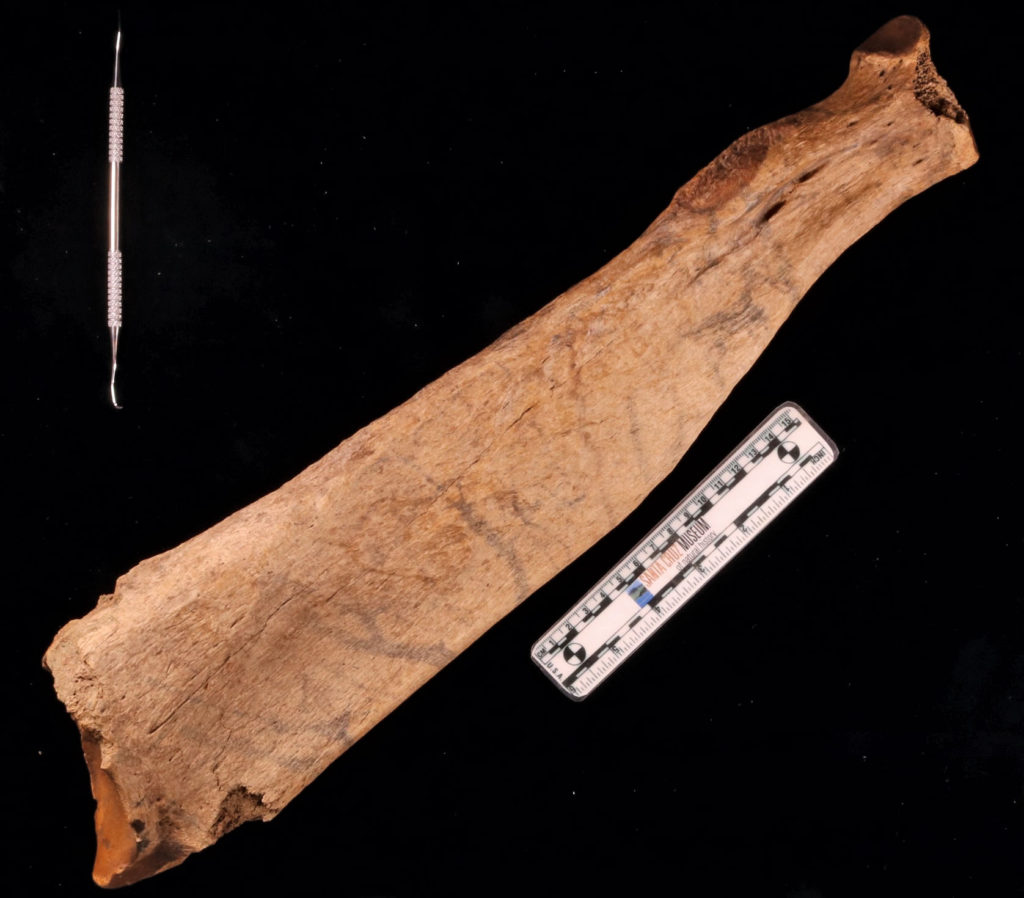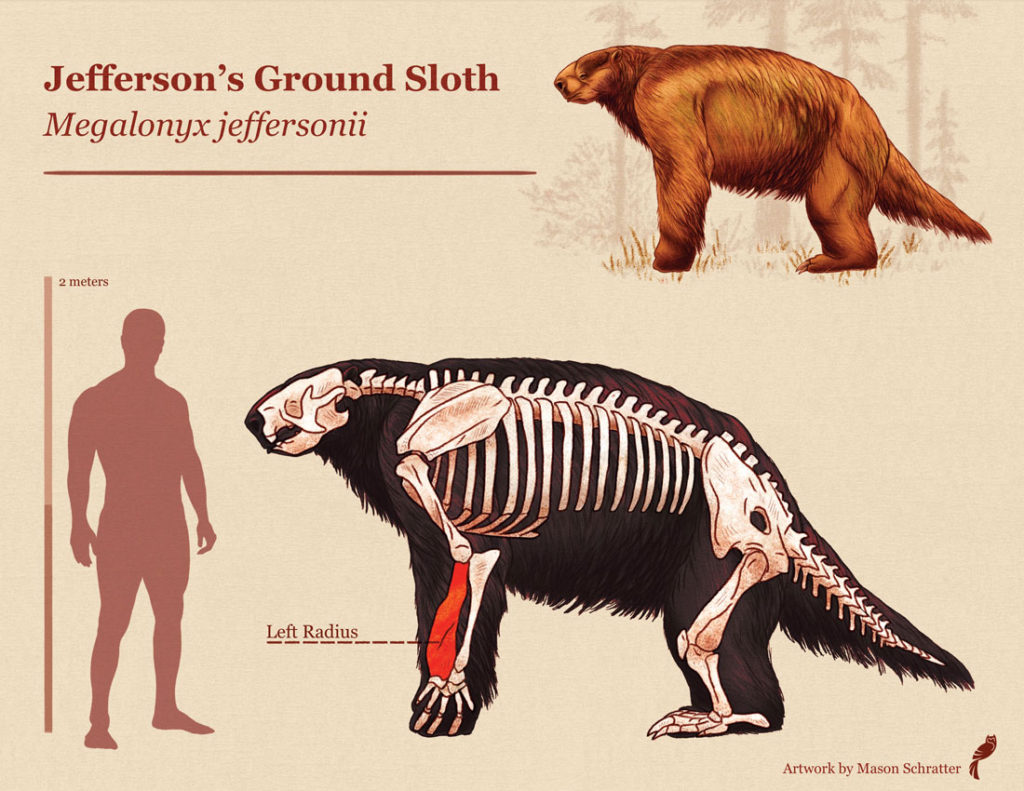
Local students from Tara Redwood School playing in the Santa Cruz Mountains last spring found a strange object that they suspected was a bone from a large animal.
This bone was brought to the Santa Cruz Museum of Natural History, where its Paleontology Collections Adviser Wayne Thompson recognized it as a fossil arm bone (left radius), likely belonging to an ancient sloth.
Thompson called in fossil sloth experts who confirmed that this bone came from a Jefferson’s ground sloth (Megalonyx jeffersonii), making this specimen the first ever fossil evidence for this species reported in Santa Cruz County.
“Megalonyx jeffersonii is one of the very first fossils documented in North America—it’s just one of those iconic animals that more people should know about,” states ground sloth expert Melissa Macias on the importance of this discovery.

The Museum of Natural History is currently working with local scientists to determine whether it is possible to come up with a precise age for this specimen. In the meantime, they know it was found in an Ice Age sediment deposit, placing it in a ballpark of between 11,500 years and 300,000 years old.
This find follows on the heels of the mastodon tooth that was discovered on Rio Del Mar beach in 2023. Both of these fossils are from the same era and their discoveries increase the Museum’s understanding of what this region would have looked like in the Pleistocene.
“Fossils are a great way to engage people with the deep past,” said Felicia Van Stolk, the Museum’s executive director, “and we’re so excited that young students made this important discovery that will continue to inspire generations of museum visitors and scientists.”

Jefferson’s ground sloths are large, extinct, plant-eating mammals with blunt snouts. At full size they were about the size of an ox, up to three meters long and 2,200-2,425 lbs.
They mostly lived alongside rivers and lakes in woodlands and forests, and their long sharp claws were probably used for grasping at food, such as stripping leaves from branches. These three-toed sloths walked on all fours but could stand on their hind legs, and some used caves for shelter.
The Museum engaged local science illustrator Mason Schratter to bring this species back to life in a depiction of the Santa Cruz landscape in the Pleistocene era. This artwork will be exhibited alongside the fossil in the Museum’s annual exhibit of science illustration, “The Art of Nature,” which opened March 23 and runs through May 26.
After the exhibit, the fossil will be carefully stored in the Museum’s collections where it will be accessible for research and future publication.













